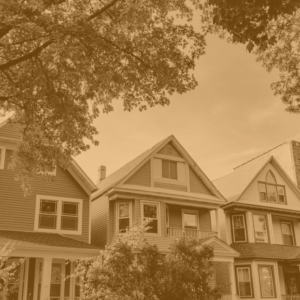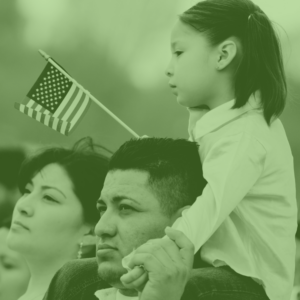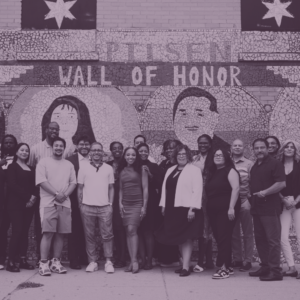It is essential to provide nuanced and culturally sensitive explanations and analyses of housing and living arrangements to ensure that a descriptive narrative accurately portrays how people live. This is especially important in understanding the Latino community’s multigenerational and multifamily living arrangements.
In 2022, nearly one-third, or 32%, of Latino households in the nation, were multigenerational. For Latinos, choosing to live in multigenerational or multifamily situations is often mutually beneficial to all. These arrangements make childcare and elder care more manageable, for example. They also reflect the profound significance of familial ties, the preservation of cultural heritage, and respect for elders. In this context, multigenerational living is a cultural practice, a way of life, and a manifestation of family bonds.
Latinos: Doubling-Up or Purposeful Multigenerational Living?
However, all too often, and at an increasing rate, many Latinos are living in multigenerational or multifamily situations not by choice but due to economic need. Such economically necessitated living arrangements are referred to as “doubling-up.” Doubled-up living is a survival strategy in response to financial distress and depends on mutual support systems within the extended family network. It is a housing arrangement that serves as a crucial safeguard, ensuring that individuals and families are prevented from facing the dire circumstances of living in a shelter or ending up on the streets.
The extent of doubling-up has yet to be fully understood. In large part because many people in this situation wouldn’t consider themselves “homeless” even if they are struggling financially, unable to afford their housing, and want to live independently.
Turning to the experiences of homeless people in Chicago, especially Latinos and Blacks, estimates from the Chicago Coalition for the Homeless show that doubled-up homelessness is the predominant form of homelessness; for Latinos experiencing homelessness in Chicago, about 91% live doubled-up. And for Black Chicagoans experiencing homelessness, about 55% live doubled up.
A recent national report suggests that in 2019 over 3.7 million Americans lived in a doubled-up household. Additionally, data from the 2020-2021 school year found that nationwide, approximately 2% of public school students were experiencing homelessness, a figure that included students living in doubled-up housing. More specifically, in the United States during the 2020-21 school year, approximately 77%, or nearly 850,000 of the 1.1 million students who were homeless in the United States, were living in doubled-up housing.
“Doubled-up” living falls under the federal definition of homelessness under Title IX (the McKinney Vento Act). This definition, for purposes of ensuring equal access to educational opportunities, is limited to children and youth, but excludes other family members. And even more significantly, the Department of Housing and Urban Development’s definition of homelessness excludes all of those living in a doubled-up situation.
Not consistently defining doubling-up as homelessness conceals or depresses the actual number of people experiencing homelessness. It is essential to note that this concealment is especially relevant to Latinos due to the large percentage who are experiencing homelessness but are living doubled-up. In other words, the true extent of homelessness among Latinos is masked due to incomplete and inconsistent definitions of homelessness.
Multigenerational and multifamily living situations by choice are not a concern for policymakers, but doubling-up must be.
Distinguishing between doubled-up homelessness and multigenerational living is crucial for policymakers, community organizations, and service providers. Understanding this distinction will help ensure that those experiencing doubled-up homelessness, which disproportionately impacts Latinos and Black Americans, are eligible for and directed to homeless prevention services and funding.




